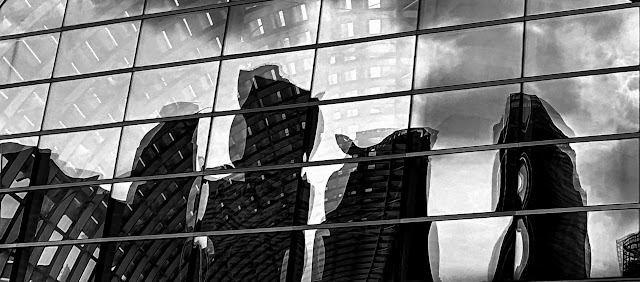LIVE WORK PLAY ALL AT ONCE
Live streaming has become a ubiquitous part of our lives. From social media platforms like Facebook, Twitter, and Instagram to e-commerce sites like Amazon and Alibaba, live streaming has permeated almost every aspect of our daily routine. It's not just about sharing videos of what you're eating or what you're doing, but it has evolved to become an essential tool for businesses to reach out to their customers and for individuals to connect with each other. In this article, we'll explore how the popularity of live streaming is changing the architecture space and township venue.
- Live Streaming and Jobs:
Live streaming has transformed the way we work. Businesses can now connect with their clients and customers in real-time, providing product demos, consultations, and customer support.
For example, a real estate agent can now give virtual tours of a property to prospective buyers, while a chef can provide cooking demonstrations to their online audience.
This new mode of working means that businesses no longer need a physical location to showcase their products or services. It also means that businesses can reach a wider audience, even if they are based in a remote location.
 |
| handheld rig allows streamer to toggle between street walking view, wide angle street view and selfie narration |
- Live Streaming and Leisure Activities:
Live streaming has also changed the way we enjoy our leisure time.
Whether it's watching a live music concert or a gaming tournament, live streaming has made it possible to experience events that we might not have been able to attend in person. This new mode of entertainment has led to the growth of the gig economy, where performers and artists can monetize their talents online. For example, Twitch, a live streaming platform for gamers, has become a popular site for gamers to make a living by streaming their gameplay to a global audience.
- Live Streaming and Architecture:
The growth of live streaming has also impacted architecture and design.
Venues and public spaces are being designed to accommodate live streaming events. For example, concert halls and sports stadiums are now being built with live streaming in mind. This means that these venues are being designed to allow for high-quality video and audio streaming, which can enhance the viewing experience for online audiences. Live streaming has also led to the development of new types of public spaces, such as "live stream cafes" and "live stream parks" that are designed for people to gather and enjoy live streaming . |
| Field pack to allow IP provider switch which ever has a strong signal to derive constantly clear visuals during urban live streaming. |
- Live Streaming and Township Venues:
Live streaming has impacted the way we think about township venues.
As more people move online, there is a growing need for digital infrastructure in our communities. This means that township venues are being designed to accommodate high-speed internet, live streaming events, and digital content creation. This trend has led to the growth of "smart cities" that are designed to integrate technology and digital infrastructure into our urban environments.
5. Live stream computer at work.
Live streaming has transformed the way we work.
 |
| effective live streaming means more artificial lights, space, props and scripting |
For example, a real estate agent can now give virtual tours of a property to prospective buyers, while a chef can provide cooking demonstrations to their online audience.
 |
| example of cooking live stream rig setup |
This new mode of working means that businesses no longer need a physical location to showcase their products or services. It also means that businesses can reach a wider audience, even if they are based in a remote location.
 |
| it is common at a domestic level we use more than 1 screen to work |
Then use of multiple screens when engaging with desktop computers has become increasingly common in recent years,
 |
| Stockbrokers has been using multiple screens for decades already |
particularly in the context of people monitoring and responding to current issues. This trend has been driven in part by advances in technology that have made it easier for individuals to access and process information from multiple sources simultaneously.
One of the most common configurations of multiple screens involves the use of a desktop computer, a notebook computer, and a mobile phone.
This setup allows individuals to monitor and respond to current events across multiple platforms, while also staying connected to other aspects of their lives.
For example, an individual who is monitoring a breaking news story on their desktop computer may also be simultaneously checking social media updates on their mobile phone and responding to emails on their notebook computer.
This approach allows them to stay up-to-date on current events while also managing other tasks and responsibilities.
Another common use of multiple screens involves the integration of a television into the setup.
 |
| Would society become more reactive than active? |
This allows individuals to consume and respond to content across multiple platforms simultaneously, such as watching a news program on television while also monitoring social media updates and responding to emails on their computer and phone.
Overall, the use of multiple screens when engaging with desktop computers reflects a growing need for individuals to stay connected and engaged with the world around them.
 |
| Hwawei war room life stream for businesses that own multiple venues |
As technology continues to evolve, it is likely that we will see even more sophisticated and integrated uses of multiple screens in the future.
Conclusion:
Live streaming has become a ubiquitous part of our daily routine, transforming the way we work, play, and interact with each other. As live streaming continues to grow in popularity, it will continue to impact the way we design and build our communities. From new public spaces designed for live streaming events to the growth of "smart cities," the impact of live streaming is just beginning to be felt. The interiors will now concern audio quality and different types of artificial lights for filming involving intensity, diffusion and bounce. Handheld devices will incorporate better microphone, control pad and uninterrupted internet streaming connection.
SO REALLY WHERE DOES ARCHITECTURE COME IN:
1. Lighting Design
Live streaming require sensitive lighting design which the user can toggle between live shows and work. The light fitting is not not simple down lights which cast heavy shadows on the human face, instead strategic soft boxes need to fill in shadows. Where work is shown like table top process, the lighting again need to accentuate colours and even shadows to communicate better. If every staff requires this, then the power consumption increase.
2. Acoustic Design
Live streaming involves visual and sound. The impact of the workplace to the street and nearby equipment will interfere with the live stream studio work. Workers involve in the studio may have to take calls mid way them need an isolated conversation booth.
3. Work Space Planning
Work space now expand differently. Props, lights , booms it is now a visual sound studio. Wiring , access to plugs , isolation to other people requires more space planning
4. Power Supply and Battery Issues
More lighting, more server running, ,more air conditioning. Should a power outage happen, there should be uninterrupted power supply (UPS) to buffer the down time. This UPS if sizable becomes a fire rated room issue. The amount of amperes this increases hence, the usual 30amp single phase for office use may not be enough. Even charging batteries does not mean a single battery anymore. It needs to be charged overnight for multiple type of battery. Shouldn't those space for charging have some fire outbreak safety feature?
5. Provision of Seamless Connectivity
The end user might need multiple Internet provider should one of them experience outage.
6. Multiple Screen usage
Multiple screen usage means more table space management, power points, keyboard and USB attachments.Table space now becomes real estate too. For larger business , live monitoring of many venue require "war-room" spaces.
7. Attention Span pacing
The end user now have to be very alert panning screen and messages from different screen will get tired faster. Intermittent sudden sleep can happen, because the intense blue light coming from the screen will affect their sleep patterns. Perhaps sleep pod design for 20 minutes intermittent sleep will become a necessity.
8. Provision of Work Live Environment
Live streaming at work now becomes the same as show business. This means being at the live stream studio space on time is important. Common for show business are buses to bring actors to the studio on time. However, when it comes to work live stream, it now make sense, work and live environment should be in the same building. That changes the urbanity combining the suburbs with the commercial space.
9. Provision of cross programmed commercial spaces.
Retail and warehousing cant be separated venues anymore. This because, physical retail shops don't quite attract customers anymore, but they are located close to living areas. It make sense the retail spaces be more like micro warehousing so that the same products can be shipped faster to the end user. So the new retail spaces will function as a smaller retail showroom with the large portion of it as micro warehousing.
Post covid measures also made business to include essential business component in their premises to stay open. Offices will be part restaurants, retail will be part warehouse, work places will be part living.















Comments
Post a Comment